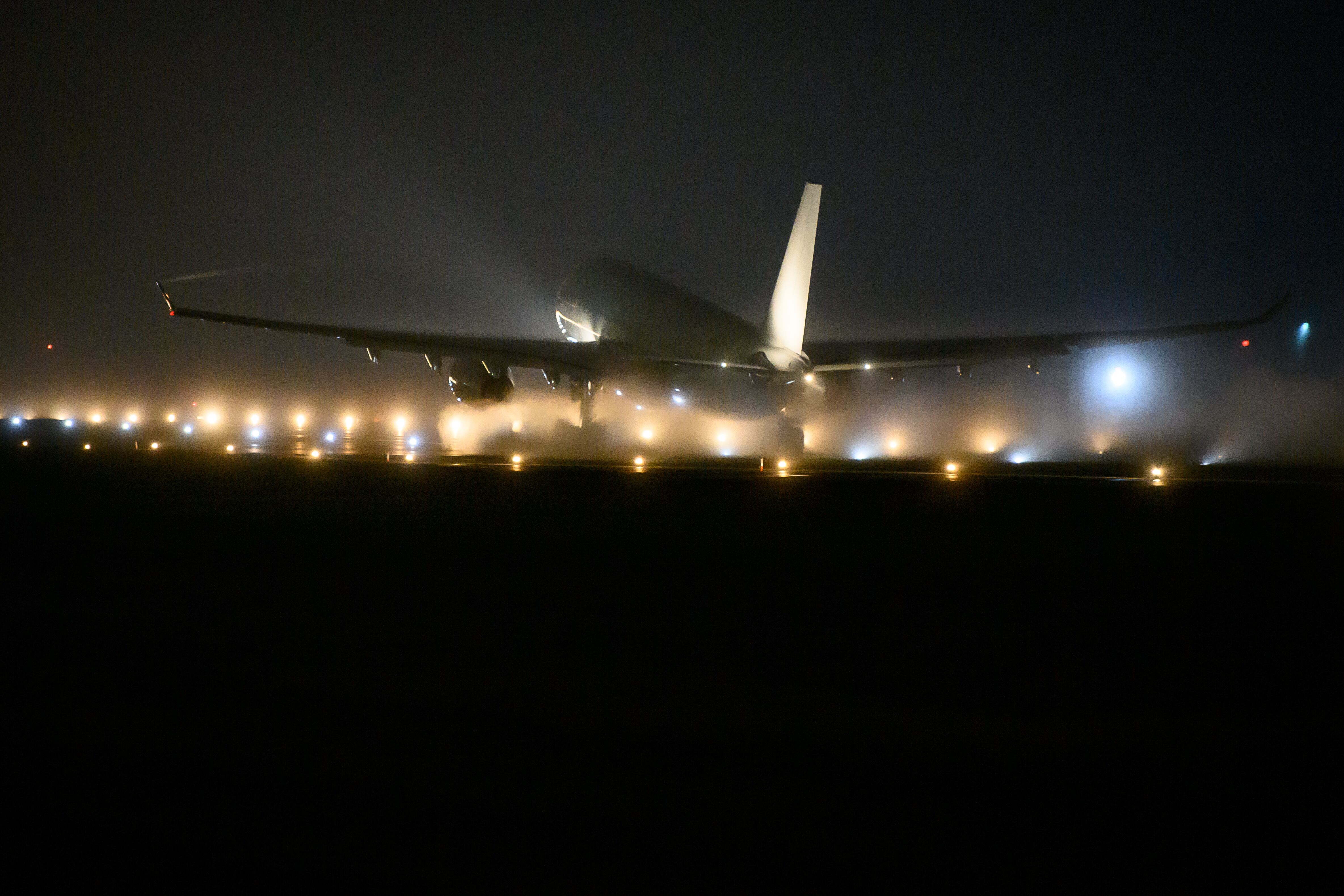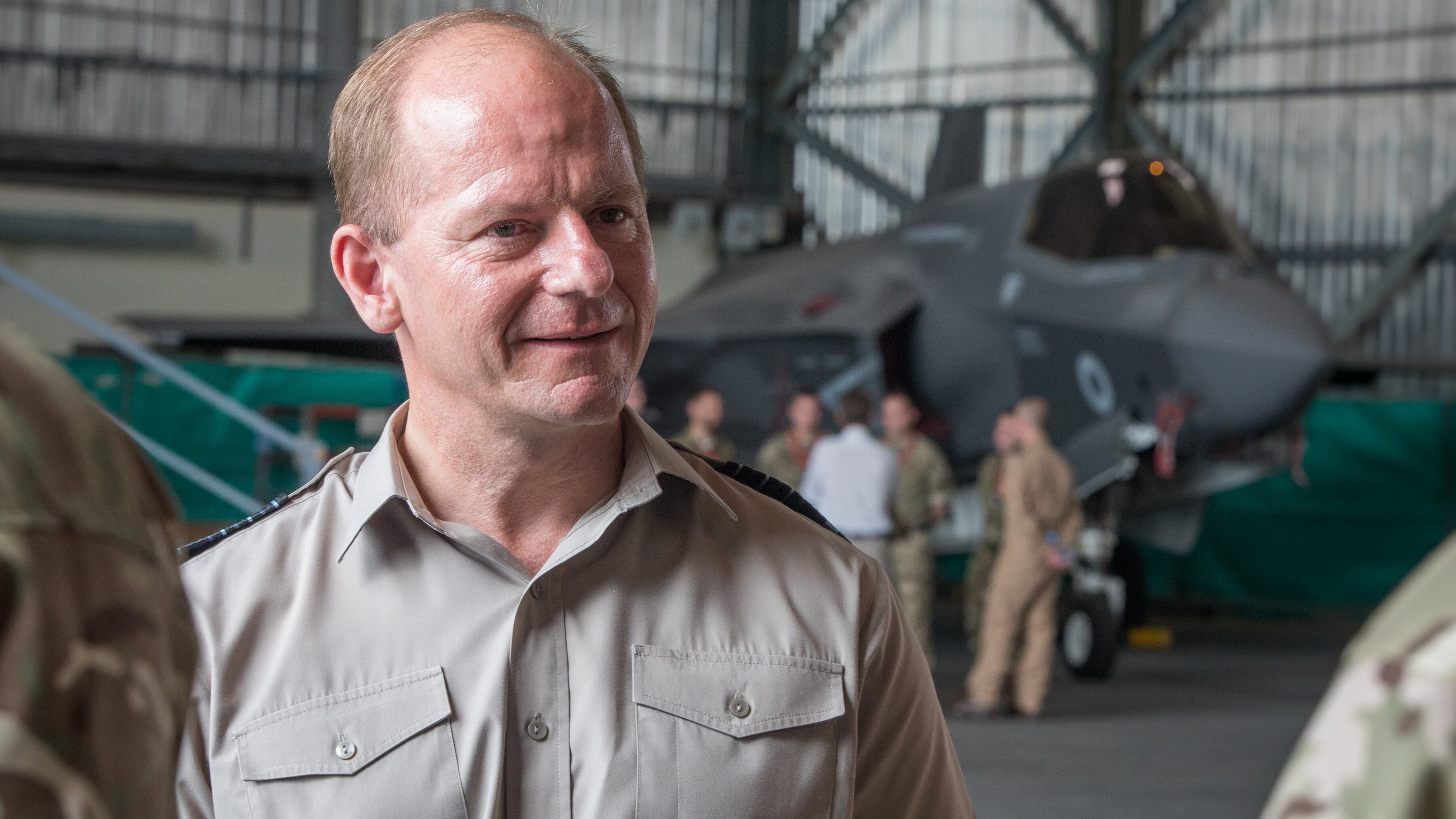LONDON — Britain’s Royal Air Force chief has said he is ready to declare a multidomain combat cloud capability as operational, and is approaching the same state for swarming drone technology.
The announcement about the military cloud capability follows successful trials earlier this year.
“We’ve been working on this in our Rapid Capabilities Office, and I can announce today that we are now at the point where our combat cloud, called Nexus, can begin to be introduced operationally,” Chief of the Air Staff Air Marshal Mike Wigston told the Global Air Chiefs’ Conference in London on July 14.
The cloud system is ready for deployment now, with a spiral expansion of capabilities planned, said an service spokesman.
Wigston also told the audience that the Royal Air Force is nearing an operational state for the swarming drone tech.
The service also intends to invest in a substantial boost to synthetic training capabilities, he added.
In a program known as Babelfish 7, the RCO has collaborated with Airbus, AirTanker and others in demonstrating the combat cloud system, pulling together the Nexus data platform and a virtual communications node known as Raven in a flexible, on-the-move command-and-control system.

Earlier phases of Babelfish explored connectivity trials involving British Typhoon and F-35 combat jets.
For the combat cloud work, Airbus and AirTanker jointly invested in upgrading the satellite communications system on a Voyager aircraft, enabling it to act as an airborne communications node while concurrently operating its air-to-air refueling tasks. The modification will remain on the aircraft for future operational use.
Nexus, however, is not tied to a specific aircraft type; it can be used on a range of platforms or facilities. The Air Information Experimentation Division of the RCO has partnered with British IT SME SiXworks for the Nexus program.
The service chief described one recent evaluation of the system using an Airbus A330 Voyager.
“We hand-carried the system onboard one of our Voyager aircraft. Once airborne, laptops and tablets were configured to show a real-time common operating picture constructed from data ingested into a ground-based Nexus node from a variety of information feeds,” he said.
“This is the combat cloud we talk about, brought to life: data from every sensor, on any platform in the operating space; processed in real time at the edge into useful information; flagged to any user with a need for that information; accessed remotely and fused with what is already known to give situational awareness at any level; and enabling better decisions than our adversaries, executed at the speed of light.”
Wigston went on to describe the capability as “flexible, secure, proven, and we have developed it in-house at a fraction of the cost of comparators.”
The cloud also received a mention from Wigston during another July 14 speech at an event in London. The theme of that conference focused on what an air and space force might look like in 2040.
Britain’s military space-related spending largely revolves around the Skynet 6 communications program, but Wigston said there are other capabilities the military urgently needs.
“As a priority, we will establish a space cloud to harvest the terabytes of space-derived data across a truly borderless domain, whilst establishing a space-based [intelligence, surveillance and reconnaissance] program to deliver a sovereign multispectral ISR constellation,” he said.
Drones and simulations
During the Global Air Chiefs’ Conference, Wigston also touched on several focus areas including drones, synthetic training, reducing carbon emissions and transforming workforce structures.
He said the Royal Air Force is to spend £40 million (U.S. $55 million) expanding it’s Gladiator distributed simulation network. Gladiator training currently focuses on the Typhoon fighter jet, but a number of other platforms are to be added, including the Wedgetail command-and-control aircraft, the Protector drone and the Guardian air defense control system.
Wigston said Gladiator will also be linked to Nexus.
He also said that in a little more than 12 months, the swarming drones trials program, known as Alvina, had advanced to the point where he soon expects to be able to declare the capability operational.
“That success, in little over a year, points to the operational utility of swarming drones. I aim to declare it operational in an equally short period of time, with more than one squadron, such is its impact. And we will spirally develop it year by year, moving swiftly where the technology allows and the threat invites,” he said. “Our drone test squadron, 216 Squadron, has proved beyond doubt the disruptive and innovative utility of swarming drones under our Alvina program. Working with our defense science laboratory and specialist industry partners, I can say that we have exercised swarms of over 20 ultralow-cost drones operating together against threat systems to brilliant effect.”

He added that until now Alvina had focused on confusing and overwhelming adversarial air defenses, but now officials are considering expanding the range of potential targets. “We are already contemplating new, disruptive missions that I will leave to your imagination,” he said.
Wigston previously said the swarming drones concept would be trialed on a Queen Elizabeth-class aircraft carrier. The service spokesman declined to give any details about suppliers to the swarming drone program, citing a confidentiality agreement.
Previously, Leonardo and drone company Callen-Lenz were associated with the program. A demonstration last year saw a number of Callen-Lenz drones equipped with a modified Leonardo-made BriteCloud decoy.
“During the demo, a number of small, remotely-piloted aircraft equipped with Leonardo’s powerful electronic warfare jamming technology were used to confuse and overwhelm trial radars simulating enemy air defence systems,” Leonardo said in an October 2020 announcement.
Andrew Chuter is the United Kingdom correspondent for Defense News.







